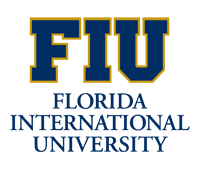Below is a summary of the abstract you submitted. Presenting author(s) is shown in bold.
If any changes need to be made, you can modify the abstract or change the authors.
You can also download a .docx version of this abstract.
If there are any problems, please email Dan at dar78@pitt.edu and he'll take care of them!
This abstract was last modified on March 31, 2025 at 9:42 p.m..

TownLake is a newly identified bacteriophage collected from a muddy, humid, and warm area near a lake in Pembroke Pines, Florida (26.02280° N, 80.35118°W). The sample was isolated using the enriched isolation technique with Microbacterium foliorum NRRL B-24224 as the bacterial host. The phage was purified and amplified to assess plaque morphology and to collect phage lysates. Visualization of the bacteriophage using electron microscopy revealed that TownLake has a podovirus morphology. Plaques had a unique halo morphology. Genomic DNA was extracted and sent to the Pittsburgh Bacteriophage Institute for sequencing. Genome annotation was conducted using Glimmer, Genemark, PhagesDB BLAST, NCBI BLAST, Phamerator, and HHPred. TownLake is classified as an EK1 cluster actinobacteriophage with a 53,817 base pair genome that encodes 52 proteins. We identified the functions of several proteins encoded by TownLake, including a purple acid phosphatase found in 17 bacteriophages in the EK1 cluster which is used to affect the host cell metabolism or as a Fenton-type catalyst in lysing the host cell. Although some protein functions were characterized, 75% of the genes remained functionally uncharacterized. In addition to making definitive function calls, we inferred the potential functions of the unknown proteins using strong single sources of evidence and the context within the genome. An additional area of interest was the halo morphology. Interestingly, only seven of the 56 members of the EK cluster (including TownLake) note a halo morphology. Five of these phages are in the EK1 cluster with a single phage in the EK2 cluster. Comparative genomic analyses were performed to identify conserved genes, unique features, and the evolutionary relationships between bacteriophages. The goal of this research is to use bioinformatics approaches to contribute to the understanding of bacteriophage biology. Experimentation is necessary to understand how the proteins interact with the host cell and validate the predicted functions of the unknown proteins.
